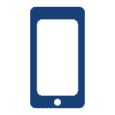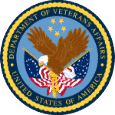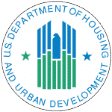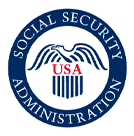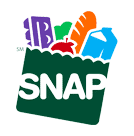Communication is an integral part of daily life. Our ability to reach out to one another instantly is something most of us take for granted with the widespread availability of cell phones and the amazing things they can do. From calling someone, to texting, and social media applications, a cell phone can quickly become indispensable to an everyday routine.
Unfortunately, as essential as a cell phone might seem, keeping a line running from month to month can become an expensive utility. Not everyone has the privilege of affording such an expensive addition onto their already growing utility bills, which is where the Federal Communications Commission (FCC), steps in to assist.
Brief History
The FCC, as an independent body of the United States government, regulates any communications that are considered radio, television, wire, satellite, and cable. This gives them the unique ability to provide families with a means to stay connected. For more than 35 years, the FCC has worked with low-income families to provide them with the ability to receive communication service for free or at greatly discounted rates.
In 1984, just as AT&T broke apart, the FCC worried that any phone rates set by a private provider would become unaffordable for many people throughout the U.S. As a direct result, in 1985, the FCC developed the Lifeline Program as a way to provide phone service to those who couldn’t afford it themselves.
The service the FCC provides first started with home phone access, but as time went on, they incorporated wireless access as well. In 1996, Congress made changes via a Communications Act, which allowed for forward-thinking, amongst other things, such as ensuring it is non-discriminatory.
Eligibility
Various components go into determining whether an individual or family can be accepted into the program. Please note that each state can have different criteria when it comes to offering free government phone service.
Eligible Programs
One way individuals or families may qualify for free government Lifeline cell phone service is if they are currently the recipient of any of the approved government assistance programs like those listed below.
- Supplemental Nutrition Assistance Program (SNAP/Food Stamps)
- Supplemental Security Income (SSI)
- Medicaid – State-specific Medicaid Program
- Veterans Pension and Survivors Benefit
- Federal Public Housing Assistance (FPHA)
- Food Distribution Program on Indian Reservations (FDPIR)
- Tribally-Administered Temporary Assistance to Needy Families (Tribal TANF)
- Bureau of Indian Affairs General Assistance (BIA)
- Tribal Head Start – Available to those who have met the income-qualifying standard.
Income Eligibility
There are also situations where individuals or families could become eligible for a free government phone service based on their total income. If the total of a household’s income is at or below 135% of the poverty guidelines set by your state and/or the federal government, you may qualify for Lifeline service. To determine this number, it is best to review the poverty line for your state.
Rules
As you decide to begin an application for your free Lifeline cell phone service, it is best to look through the rules. These rules are straightforward since the Lifeline assistance program only offers a phone or an Internet service.
- You can only get either a phone or the internet through the Lifeline service; you cannot get both.
- The Lifeline service is only for one phone per household.
- The Lifeline benefit will apply per household; therefore, you cannot have more than one person per household apply for it and get approved, or you will be breaking FCC’s rules and will end up losing the benefit altogether.
- This benefit also cannot be given to another person. Even if they qualify, they need to do so on their own under their own household.
Application Process
The application process can be completed online and, in some cases, through the use of a paper form. As you fill out the application, remember to be honest since backup documentation will need to be provided before a final decision can be made on your approval.
You will need to provide an accepted form of identification and qualifying proof of being a recipient in an approved government assistance program (i.e. documentation from SNAP/Food Stamps benefit, SSI, etc.), or if applying due to income, proof of household income. Acceptable forms of identification include:
- Proof of Identification
- Driver’s license or Passport (unexpired)
- Birth Certificate
- Certificate of Naturalization or U.S. Citizenship
- Permanent Resident Card
- Military Discharge
- Weapons permit (unexpired)
- U.S. government, military, state, or Tribal issued ID (unexpired)
- Government assistance program document (that includes proof of identity)
- In addition to providing proof of qualifying programs or income, you will also need to provide an accepted form of address. Acceptable form of proof of address include:
- Driver’s License, Government, State, or Tribal Issued ID (unexpired)
- Current Income Statements such as a paystub or a W2
- Statement of Benefits from a Qualifying Program Which Contains Name and Address
- Current Mortgage or Lease Statement
- Government Assistance Program Documents
- Retirement/Pension Statement of Benefits
- Utility Bill
- Unemployment/Workers’ Compensation Statement of Benefits
As you begin the process of applying for your free government phone service, Assist Wireless is here to help you through the process. Assist Wireless works through the federally-mandated program that allows low-income individuals to continue to have the ability to communicate with each other and the outside world without putting undue stress on their finances.
Available in 23 Oklahoma locations, all you have to do is reach out online, via phone, or stop by an Assist Wireless store for more information. If you qualify, you can begin your enrollment process right away. With both Tribal and Non-Tribal plans available, there is a plan out there for every eligible individual or family, whether you are able to afford a couple of dollars for an upgraded plan or remain at the free service provided by the government.
Since communication is such an integral part of our lives, nothing should hold you back from determining whether you too could qualify for a free government Lifeline cell phone service.


